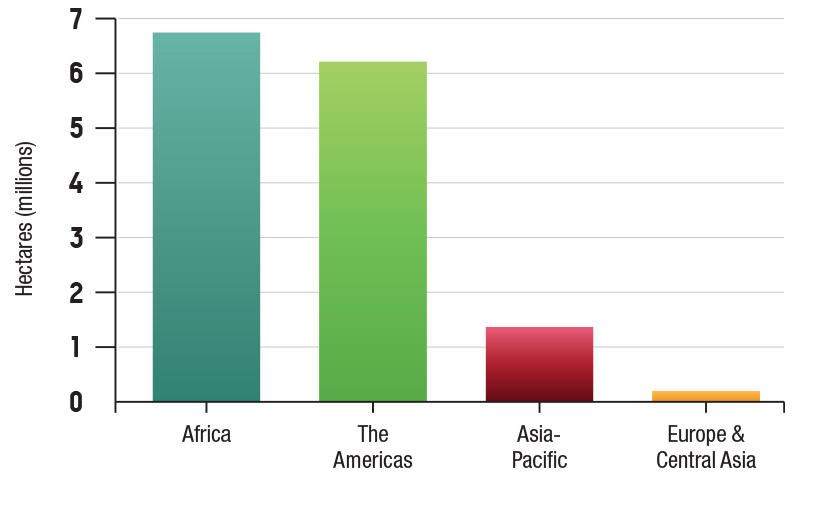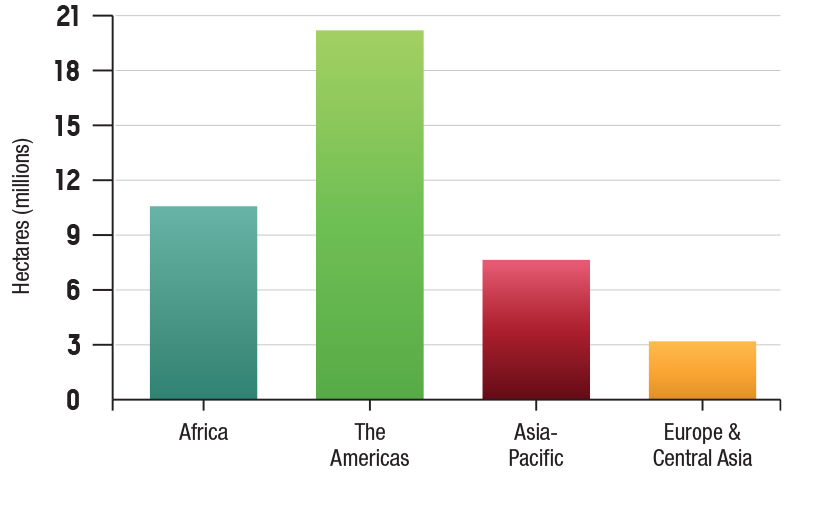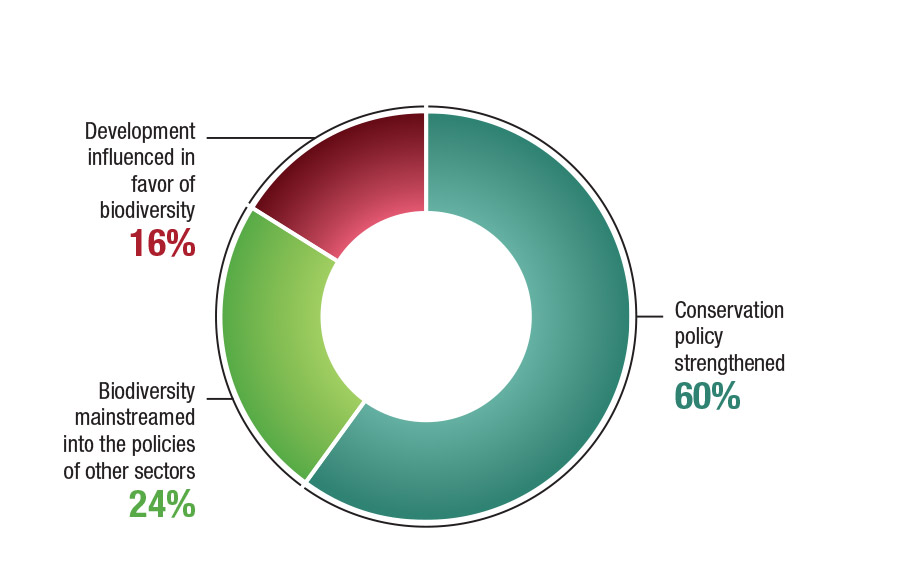Since its inception in 2000, CEPF has strived to safeguard some of the world’s most biologically rich ecosystems by supporting civil society in implementing stakeholder-informed conservation strategies in biodiversity hotspots. The following data demonstrate the impact CEPF has had on a global scale through the projects implemented by its grantees within four impact categories: biodiversity, human well-being, civil society capacity and enabling conditions.
Biodiversity
Key Biodiversity Areas with Strengthened Management
Total: 41.7 million hectares2001 through fiscal year 2016
Hectares of Production Landscapes with Strengthened Biodiversity Management
Total: 6.3 million hectares2001 through fiscal year 2016
Human Well-Being
Communities Directly Benefiting
Total: 2,612 communitiesCivil Society Capacity
* Note: CEPF gathers this data via the Civil Society Tracking Tool, which CEPF began using in 2010. The chart includes data for 117 grantees, the number of grantees who had completed assessments by the end of fiscal year 2016.
Note: CEPF defines “networks/partnerships” as a connection (alliance, network, partnership) among civil society groups and possibly other sectors. The relationship can be either formal or informal, but it must have a lasting benefit beyond the immediate project. Examples include an alliance of fisherfolk to promote sustainable fisheries practices; a network of environmental journalists; a partnership between an NGO and a private sector partner to improve biodiversity management on private lands; and a working group focusing on reptile conservation.
Enabling Conditions
Sustainable Financing Mechanisms Benefiting from CEPF Support
Photo Credit
Panther chameleon, Madagascar. © Russell A. Mittermeier











